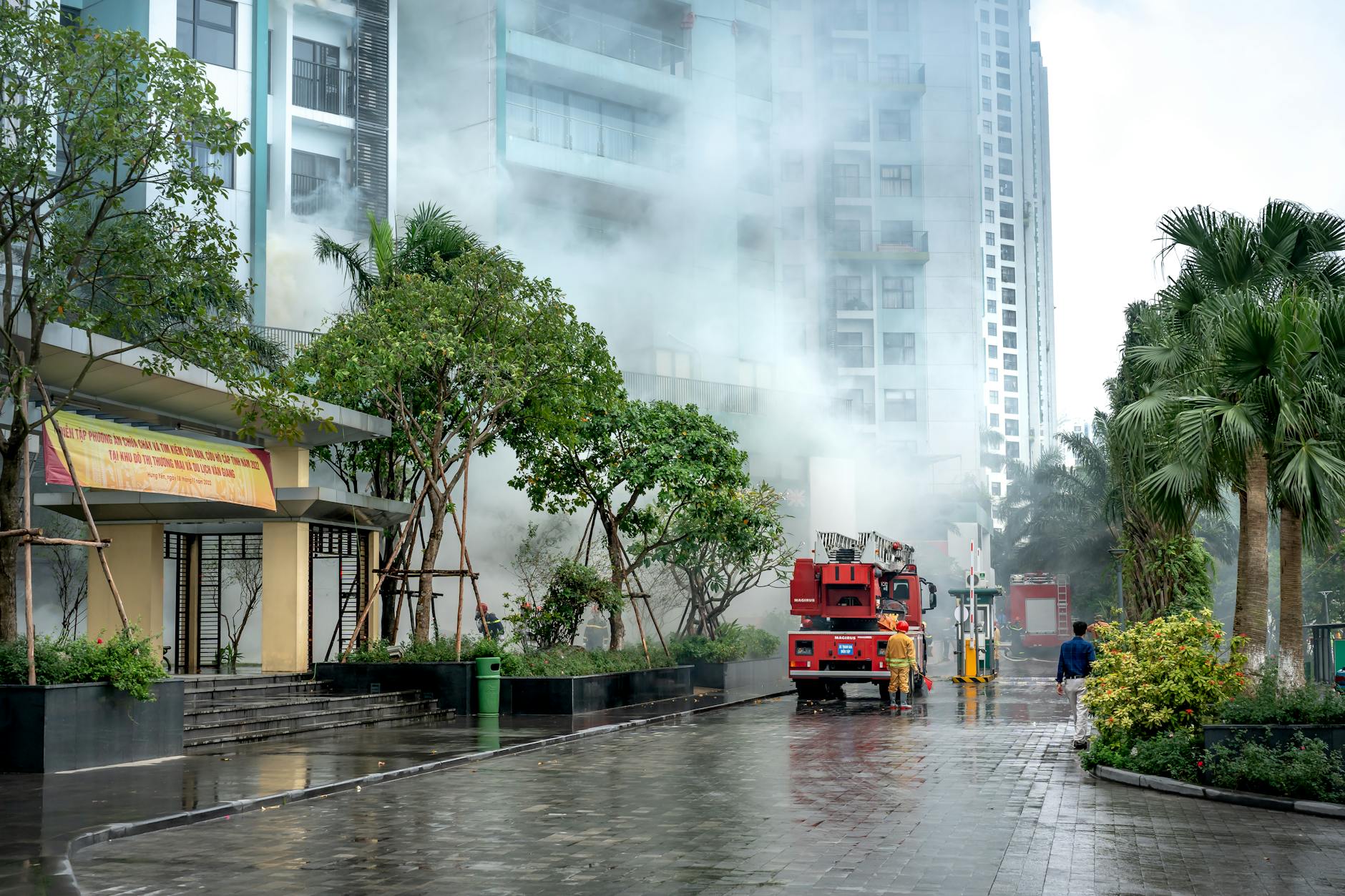Fire safety laws are essential to safeguarding lives and reducing risks of damage in residential buildings. For small blocks of flats, these laws outline responsibilities and practical measures to protect both residents and properties. Whether you're a landlord, managing agent, or freeholder, understanding your legal duties is vital to ensuring compliance and maintaining safety.
 Photo by Quang Nguyen Vinh
Photo by Quang Nguyen Vinh
Understanding Fire Safety Responsibilities
In small blocks of flats, the safety of all residents and visitors largely falls into the hands of a specific individual or group known as "responsible persons." This section explains who they are and what they must do.Who Is a 'Responsible Person'?
Under the Regulatory Reform (Fire Safety) Order 2005, a "responsible person" could be the landlord, leaseholder, managing agent, or owner of the property. You’re legally obligated to ensure fire safety in the communal areas of the building. This might include stairs, corridors, and lobbies. Your primary responsibilities include identifying risks, putting safety measures in place, and maintaining them effectively. Non-compliance could not only endanger lives but also result in severe fines or imprisonment. Learn more about the role of responsible persons from the government's guidance.Key Responsibilities and Legal Duties
Key duties of responsible persons involve:- Performing fire risk assessments tailored to the building size and occupancy.
- Installing and maintaining fire safety equipment, such as alarms and fire extinguishers.
- Keeping emergency escape routes clear and marked.
- Regularly inspecting fire doors and communal facilities.
- Informing and educating residents about fire procedures.
 Photo by Quang Nguyen Vinh
Photo by Quang Nguyen Vinh
Key Fire Safety Regulations and Guidance
Several pieces of legislation outline the fire safety standards you must meet. Below are the key laws and guidelines relevant to small blocks of flats.Regulatory Reform (Fire Safety) Order 2005
This foundational law requires responsible persons to assess risks and implement safeguards. It primarily focuses on common parts of the property—areas shared by all residents. Detailed fire risk assessments must be carried out regularly or when significant changes occur. For more practical advice, refer to the official UK government's regulatory guidance here.Fire Safety (England) Regulations 2022
These regulations introduced updates like ensuring evacuation plans are current and fully visible. Fire doors must be routinely inspected, and landlords should educate residents about their purposes and importance.Building Safety Act 2022 Impact
Section 156 enforces more stringent rules for building owners. For small blocks of flats, these requirements stress fire compartmentation (fire-stopping barriers like fire-resistant walls and floors) and routine testing of fire equipment.Using Home Office Guidance (2025)
The upcoming 2025 Home Office guidance provides clearer steps for landlords and managing agents. It focuses on practical measures to meet legal obligations effectively. While it’s not yet in force, ensure you’re prepared by staying updated with guidance from the Home Office.Conducting a Fire Risk Assessment
A fire risk assessment is the cornerstone of fire safety compliance. It ensures potential hazards are identified, evaluated, and mitigated.Purpose and Scope of a Fire Risk Assessment
The goal of a risk assessment is to reduce risks through actionable steps. It should assess both the structural integrity of the building and the management of emergency protocols.Checklist for Fire Risk Assessments
Here’s a basic checklist:- Check all fire alarms and extinguishers.
- Inspect fire-resistant materials like walls, ceilings, and doors.
- Ensure clear and accessible escape routes.
- Inspect communal electrical wiring and systems.
- Review smoking policies in communal spaces.
When to Hire a Professional Assessor
If you're unsure about assessing hazards or installing equipment correctly, hiring a certified fire risk assessor is wise. Professionals bring in-depth expertise and ensure compliance.Essential Fire Safety Measures To Implement
Beyond risk assessments, the active management of safety measures is necessary. Let’s explore critical maintenance practices.Fire Compartmentation and Escape Routes
Fire-resistant walls, floors, and doors protect lives and property by containing fires. It's vital to:- Use certified fire doors with functional self-closing mechanisms.
- Maintain clear and illuminated escape routes, especially in stairs.
Regular Maintenance and Testing
Set schedules for regular testing:- Check fire alarms weekly.
- Inspect extinguishers monthly.
- Inspect emergency lighting every six months.
- Perform a comprehensive yearly review.

